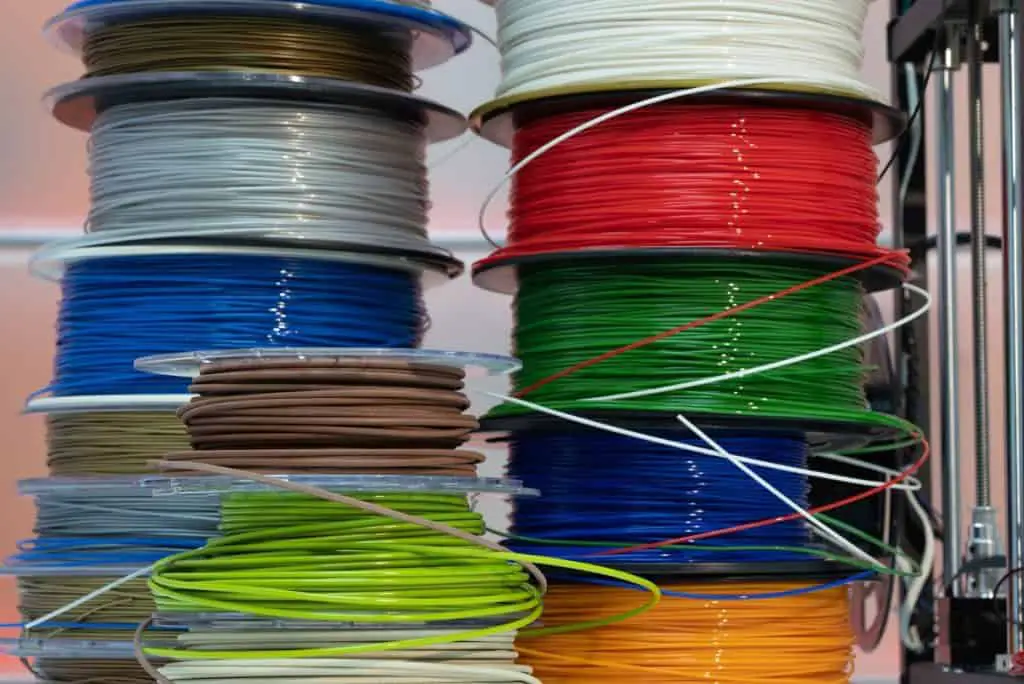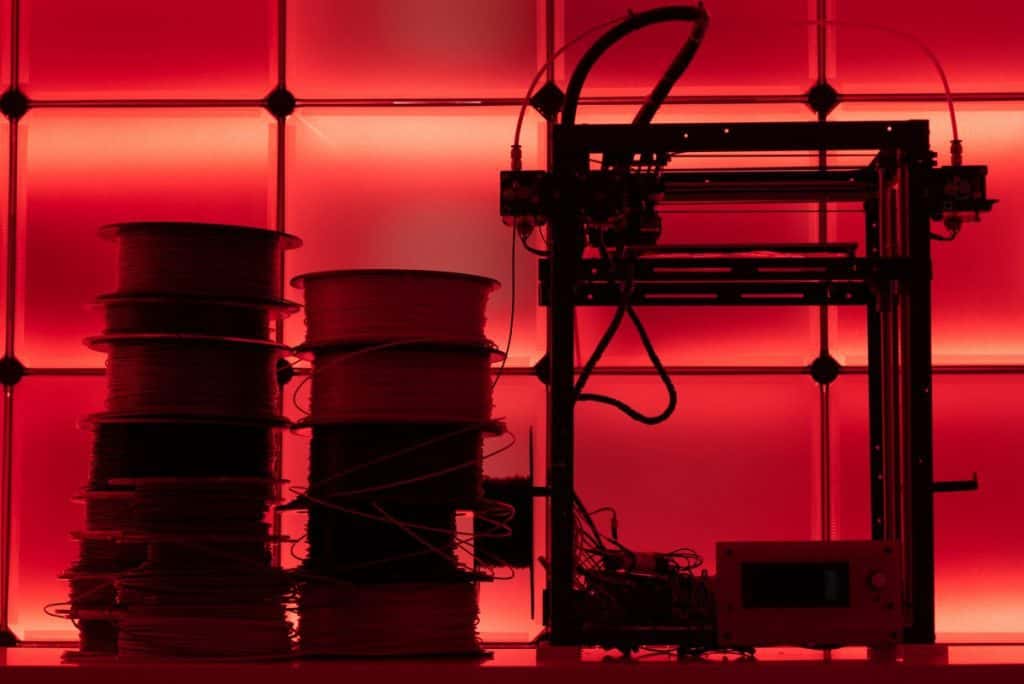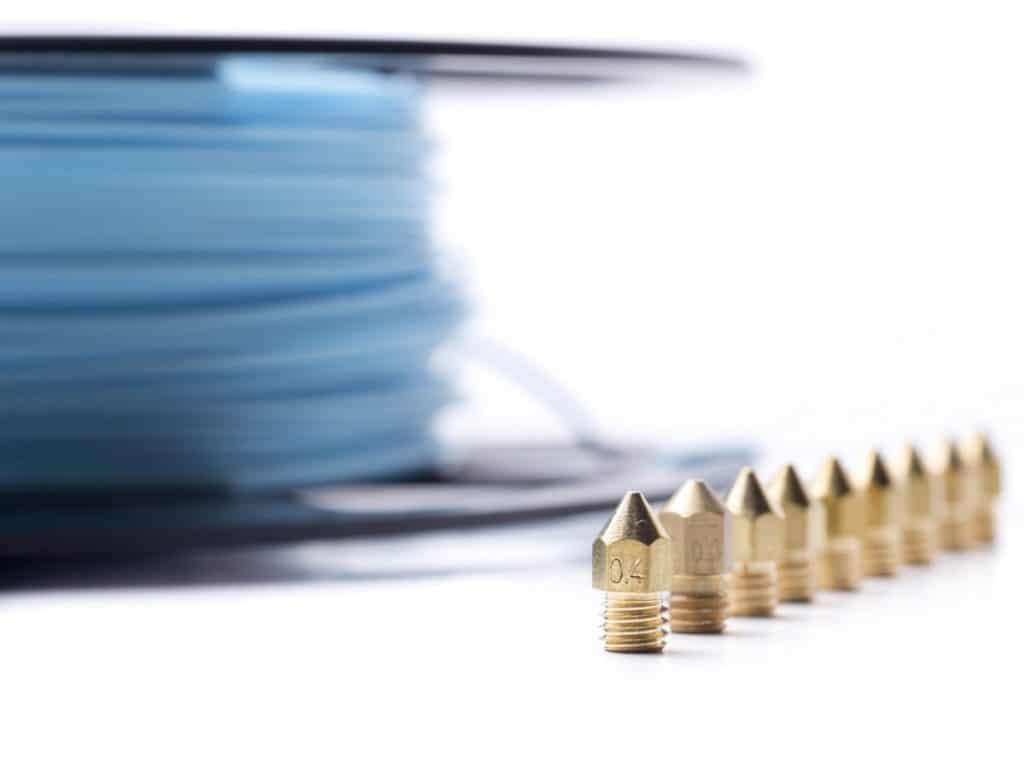You may have heard how you can do 3D printing with metal and wanted to learn more about the process. Some people heard how you must have a high-end 3D printer priced at just below $200,000 to do metal. Is that the truth?
Can all 3D printers use metal? In the past, you needed an expensive 3D printer for metal, but you can now buy metal filaments to print metal in all FDM/FFF 3D printers. The metal filaments include iron, stainless steel, copper, and bronze. The filament is composed of metal fillers and PLA plastics as the binding polymer.
If you would like to learn more about 3D printing with metal, keep reading because we will show you how to use metal for your next 3D printing project.

How 3D Printers Can Print with Metal
The Virtual Foundry first developed the technology with a filament that uses just enough plastic to put it through the printer. Most of the filament, an estimated 88.5 percent, is a high purity metal powder. The other 11.5 percent gives it enough plastic to put it through the 3D printer successfully.
Once you finish putting the metal through the 3D printer, you can remove the plastics with post-processing, which will give it 99 percent metal purity. Most projects don’t require more than that. As this technology develops, we may see less plastic used in the filament. The Virtual Foundry says that they aim to lower the amount of plastic used to eight percent.
Metallic Colored Filaments vs Metallic Filaments
Be aware of how metal filaments will have two types: metallic colored filaments and metallic filaments. If you want to 3D print with real metal, you want the latter. The metallic-colored filaments contain five to 40 percent metal to give a metal appearance, but the metal only serves aesthetic appeal. Metallic filaments, on the other hand, were meant to make metal parts, and you don’t want to mix this up when you go to 3D print.
Some of the best manufacturers for metallic filaments include the Virtual Foundry and the BASF. The Virtual Foundry offers a larger selection of metal filaments that include:
- Filamet Tungsten
- Filamet Stainless Steel 316 L
- Filamet Copper
- Filamet Bronze
- Filamet Aluminum 6061
- Filamet High Carbon Steel
- Filamet Titanium 64-5
- Filamet Inconel 718-34
On the other hand, BASF is best known for its metallic filaments like Ultrafuse 17-4 PH and Ultrafuse 316 L. As you see, Virtual Foundry offers a better selection, but you may not want to discredit BASF because its filaments offer good flexibility for easier printing. They’re not as brittle as filamet filaments from Virtual Foundry. How brittle filamet filaments are will depend on the metal and the filler percentage. In some cases, you may find that filamet filaments don’t print as well with certain 3D printers.

Metal 3D Printing to the Consumer Market
In the past, 3D printing with metal was only done in the industrial or the professional setting because of prohibitive costs. The other problem came from the slow speed. Printing a single metal piece required up to 48 hours. The 3D printers for the consumer market don’t require the amount of time or cost.
Metal filament for your 3D printer may cost anywhere from $20 to $60. This relatively new technology could eventually revolutionize metalworking because of how you can suddenly make bronze and copper statues without a kiln. The industrial 3D metal printers might take 48 hours, but the 3D printer in the consumer market only takes five hours.
Even big companies began to pay attention to this new technology since it made 3D printing with metal more accessible.
Where Would You Want to Use Metal in 3D Printing
Now that you understand how you can do metal printing with a 3D printer, let’s look at where you might apply it. One of the biggest areas where 3D printing with metal has the most use is in the manufacturing of spare metal parts. You might also use a 3D printer to design a fully functional prototype.
3D metal printing allows a variety of other things like creating heatsink, heat exchangers, ductwork, rigid housing, and production tools.
Some of the industries where you commonly see 3D metal printing include the automotive and aerospace sectors. A growing number of industries have seen benefits to using 3D printers for metal. Believe it or not, you can even create a rocket motor using a 3D printer while saving on the cost and the weight.
The Limits of 3D Printing with Metal
The 3D printing of metal has a few things holding it back from revolutionizing metalworking. First, powdered metal costs more than raw metals. Also, the speed of production, while it has improved, remains slower than what a metal worker at a traditional foundry can produce.
While you can use most 3D printers to print metal, the process tends to be more complicated than more traditional methods. If you wanted to learn how to 3D print metal, it may take time to learn how to do it successfully. The final thing is that while your 3D printer can produce metal parts, you can’t manufacture large metal parts with it.

What to Keep in Mind with Extrusion-Based Metal 3D Printing
This is the type of metal 3D printing that you would think of for the consumer market. You need an FDM/FFF printer, but you should also understand how you will need to go through several post-processing steps after the printing, and it may be useful to understand the process. Some of the things included are:
- Powder removal
- Stress relief
- Part removal
- Machining
- Advanced heat treatments
- Surface treatments
- Inspection
Powder Removal
Once you finish printing your metal part, you will see it covered in metal powder. You will want to brush off the powder and recycle it for use in another metal part.
Beware: You must do this with gloves in an enclosed chamber because metal dust can cause dizziness and nausea, but even in a small amount, breathing it in can damage your lungs or cause lung cancer, among many other dangers.
Stress Relief
Rapid heating and cooling from the 3D printer can cause internal stress and fractures that may weaken your metal part. You must put it through stress relief treatment for it to be fully usable.
Part Removal
Anchored to a base plate, this prevents the metal from warping due to stress fractures. You might use EDM wire or a bandsaw to remove it from the base plate.
Machining
Applications with metal parts often leave no room for error. Because of that, you will often need to finish the 3D print using milling, tapping, engraving, or CNC machining.
Advanced Heat Treatment
Most 3D metal prints will have a high density, but they won’t have enough to make them usable. From a process known as hot isostatic pressing, the combined pressure and heat pushes out the microporosity to ensure a 100-percent solid piece. Keep in mind, this process can be somewhat pricey for those without the equipment.
Surface Treatments
You may not need to do this step depending on how you will use the part. However, you may need to have the channels smoothed, file the edges and polish the face.
Inspection
In the final step of post-processing, you must subject all your 3D metal prints to a high level of scrutiny before use. Before you take it out into a scenario where it could cause harm, you want to be sure that it can withstand the trials. In particular, look for parts with lattice structures or an internal cavity.
Nozzles: What to Use
With 3D metal printing, you will want to use hardened steel nozzles with abrasive filaments. This type of filament will wear out a brass nozzle quickly, so you want to act with foresight to take the problem down ahead of time. Any time that you work with PLA, you want to take action to protect your nozzles. The occasional PLA print won’t burn out a brass nozzle, but printing like this for hundreds of hours each month will wear them down.
A hardened steel nozzle should last three to six months. You will see your nozzle is worn out because of how it looks different from when you first started. Look for ridges, grooves, and marks on the nozzle. Using a worn out nozzle will lead to uneven layering. Avoid using abrasive filament when possible to make your nozzles last longer.
To put it into perspective, any time that you use two materials in a filament, it could have an abrasive effect, and you want to either use nozzles that can withstand it. Especially if you plan to 3D print metal in an ongoing fashion, you will want to buy hardened steel nozzles.

Related Articles
- 3D Printer Nozzles (Detailed Overview)
- How Do You Resume A 3D Printer After Power Loss?
- Create a Temperature Tower Using Cura – The Easy Way
- Cura Profiles
- All About 3D Printer Plastic
Conclusion
As long as you have an FDM/FFF 3D printer, you can 3D print metal. Keep in mind, some of the materials that you use for metal printing may require further external devices to ensure the best results. Some 3D-printed metal parts will also require more complex post-processing like Ultrafuse. The technology of metal filaments have made it so that even average people can do metal printing for a variety of applications.
Make sure you check out our YouTube channel, and if you would like any additional details or have any questions, please leave a comment below. If you liked this article and want to read others click here.
